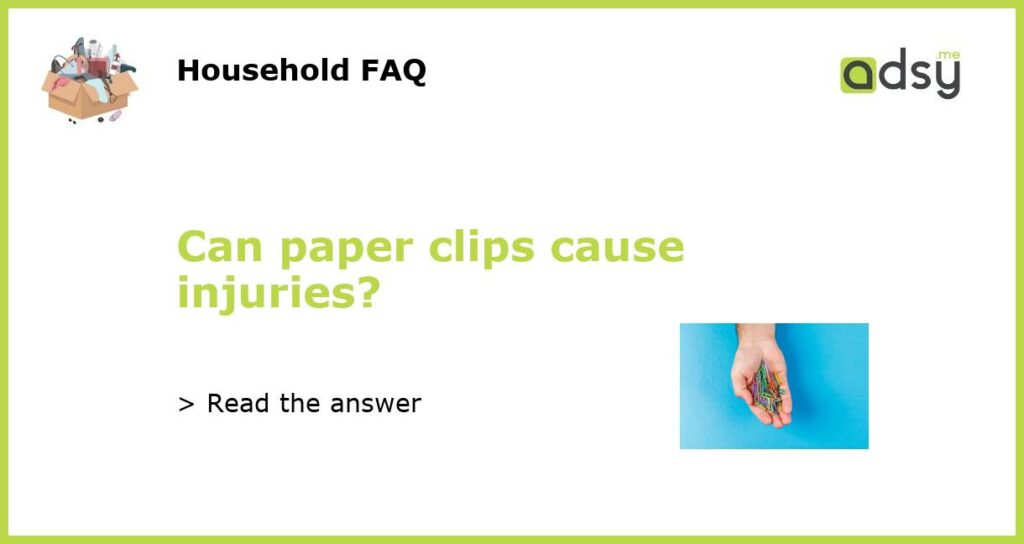Yes, paper clips can cause injuries
Although paper clips may seem harmless, they can actually cause injuries if not handled properly. These small metal clips are often used to hold papers together, but they can also pose a risk when used inappropriately or when someone is not aware of the dangers they may present. This article will explore the potential injuries that can result from paper clip misuse and provide tips on how to handle and store them safely.
The dangers of paper clip misuse
While paper clips are generally safe tools, they can become dangerous when not used correctly. One of the most common injuries associated with paper clip misuse is puncture wounds. These sharp objects can easily pierce the skin, causing pain, bleeding, and the potential for infection.
Another potential injury that can occur with paper clips is eye injuries. If a paper clip is accidentally flung or improperly used, it can come into contact with the eyes, leading to scratches, corneal abrasions, or even more serious damage. It is crucial to be cautious when handling paper clips near the face or eyes.
Furthermore, paper clips can cause injuries if they are ingested. Small children, in particular, may be attracted to brightly colored or shiny paper clips and may unknowingly put them in their mouths. Swallowing a paper clip can lead to choking or damage to the digestive tract, potentially requiring medical intervention.
Tips for safe handling and storage
While paper clips can pose a risk for injuries, following some basic safety precautions can help prevent accidents. Here are a few tips for safe handling and storage of paper clips:
- Use paper clips only for their intended purpose: Paper clips should only be used for binding papers together. Avoid using them as makeshift tools, such as prying open containers or unclogging devices.
- Store paper clips in a secure container: Keep paper clips in a designated container, such as a desk organizer or an organized drawer. This will help prevent accidental spills or situations where someone could unintentionally step or sit on a loose paper clip.
- Keep paper clips away from children and pets: If you have young children or pets in your home, make sure to store paper clips out of their reach. Consider using childproof containers or locking drawers to ensure their safety.
- Be cautious when handling paper clips near the face or eyes: Avoid flipping or twirling paper clips near your face, as this increases the likelihood of eye injuries. When using a paper clip, hold it securely to prevent it from accidentally flying off.
- If an injury occurs, seek medical attention if necessary: If you or someone else sustains an injury from a paper clip, evaluate the severity of the wound. If it is deep, bleeding profusely, or shows signs of infection, it is advised to seek medical attention.
While paper clips may seem harmless, they have the potential to cause injuries if mishandled or used improperly. Puncture wounds, eye injuries, and ingestion-related incidents are among the potential risks associated with paper clips. By following basic safety precautions, such as using them only for their intended purpose and storing them securely, you can minimize the risk of injuries. If an injury does occur, evaluate its severity and seek medical attention if necessary.






